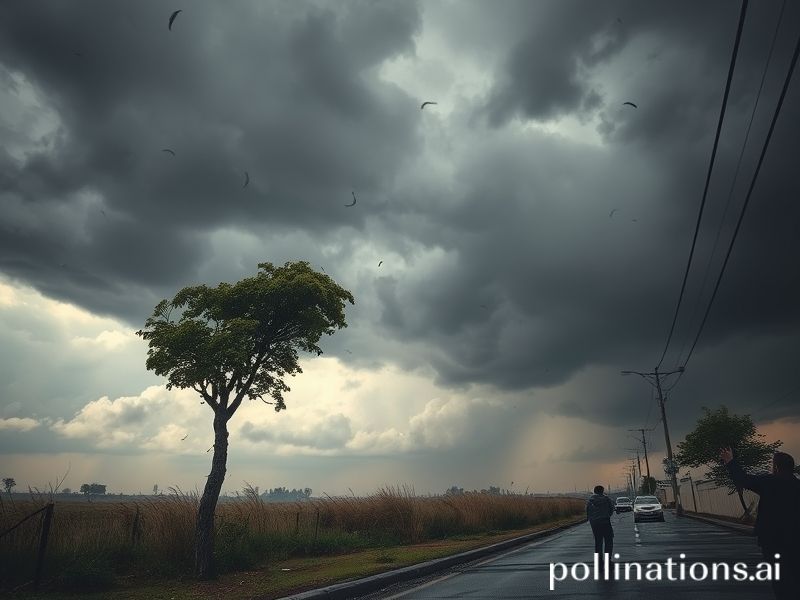When the Wind Blows: The Global Buzz Around High Wind Warnings
# When the Wind Blows: Why “High Wind Warning” is the Latest Global Buzzword
In a world where we’re used to scrolling through memes about “adulting” and “quiet quitting,” the term “high wind warning” might seem like an odd addition to our digital lexicon. Yet, here we are, with this meteorological phrase trending globally, sparking conversations, and even inspiring a few laughs. So, why is everyone suddenly talking about high winds? Let’s dive in.
## The Science Behind the Hype
First, let’s get our facts straight. A high wind warning is issued by meteorological agencies when sustained winds of 40 mph (64 km/h) or higher are expected for at least an hour, or when gusts of 58 mph (93 km/h) or higher are anticipated. It’s not just about the leaves rustling dramatically in your backyard; these winds can cause significant damage, uprooting trees, downing power lines, and turning your carefully arranged patio furniture into a projectile.
## Why It’s Trending Now
So, why is this term suddenly everywhere? Well, it’s not just one event that’s driving the trend. Instead, it’s a perfect storm (pun intended) of factors:
1. **Climate Change Conversations**: As our planet warms, extreme weather events are becoming more frequent and severe. High wind warnings are becoming more common, and people are taking notice.
2. **Social Media Amplification**: From viral videos of people struggling to walk against the wind to memes about “high wind hair don’t care,” social media has turned these warnings into a global spectacle.
3. **Cultural Impact**: High winds have inspired everything from art to music. Remember the “Wind Beneath My Wings” ballad? Or the iconic scene in “The Wizard of Oz” where Dorothy’s house gets swept away? High winds are a cultural staple, and now, they’re back in the spotlight.
## Social Impact: More Than Just a Breeze
High wind warnings aren’t just a trending topic; they have real-world implications. They can disrupt daily life, causing power outages, school closures, and travel delays. They can also pose serious safety risks, from flying debris to fallen trees.
Moreover, these warnings have sparked conversations about preparedness and resilience. Communities are coming together to share tips on securing their homes, checking on vulnerable neighbors, and staying safe during extreme weather events.
## The Significance: A Wake-Up Call
The trend of “high wind warning” is significant because it’s a wake-up call. It’s a reminder that our climate is changing, and we need to adapt. It’s a call to action to reduce our carbon footprint, invest in renewable energy, and build more resilient communities.
It’s also a reminder of the power of nature. In an age where we’re used to controlling our environment with air conditioning, heaters, and weather apps, high winds bring us back to reality. They remind us that we’re at the mercy of forces much bigger than us.
## Conclusion: Riding the Wind
So, as we ride this trend of “high wind warning,” let’s not just laugh at the memes or marvel at the videos. Let’s use this opportunity to educate ourselves, prepare for the future, and take action to protect our planet. After all, the wind is blowing, and it’s time we listen.
—







